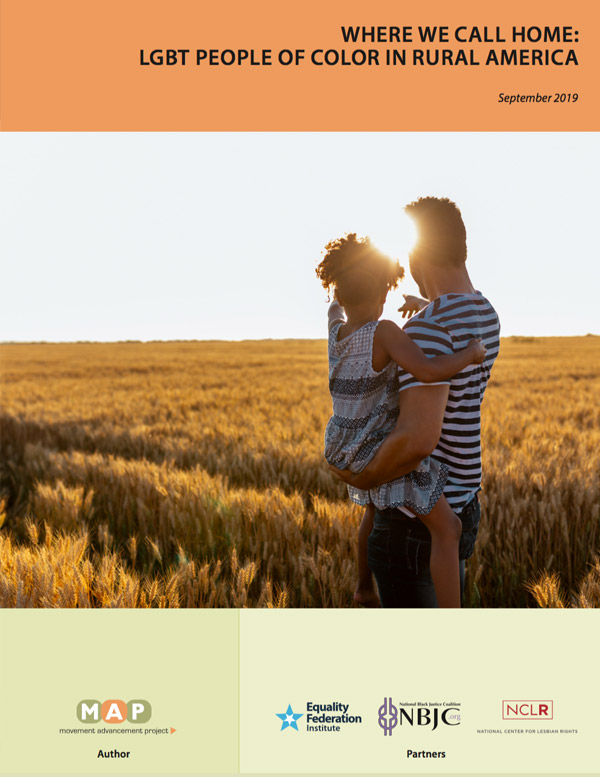Media coverage often portrays rural America as singularly white, conservative and working-class. Yet at least 10 million people of color, including lesbian, gay, bisexual, and transgender (LGBT) people of color, call rural America home. The Movement Advancement Project (MAP) released a new report,
Where We Call Home: LGBT People of Color in Rural America, which examines the unique challenges of LGBT people of color in rural America and highlights distinct experiences across different communities of color. As the second publication in the
Where We Call Home series, this report details how the structural challenges of rural life amplify acceptance of or discrimination against LGBT people of color.
This report offers extensive new findings on LGBT people of color in rural communities, where discrimination based on race and immigration status is compounded by discrimination based on sexual orientation, gender identity and gender expression. Overall, rural states are significantly less likely than majority urban states to have vital nondiscrimination protections, and are also more likely to have harmful, discriminatory laws. Also, among rural states, those with worse LGBT policy climates also have higher populations of people of color, meaning LGBT people of color are especially at risk of discrimination and especially likely to lack protection against it.
Because LGBT people of color may experience discrimination based on their sexual orientation and/or gender identity and their race or ethnicity, passing nondiscrimination protections at the federal, state, and local level is vital to ensure full participation in all aspects of life. The report concludes with recommendations for community organizations, educators, healthcare providers and policymakers to address the specific needs of LGBT people of color in rural communities.
Where We Call Home: LGBT People of Color in Rural America: ReportDownload
Folleto Comunitario Rural (Español)Download
To access all our resources and research on LGBT people in rural communities, visit our
rural topic page.
Recommended citation:
Movement Advancement Project. September 2019.
Where We Call Home: LGBT People of Color in Rural America.
www.lgbtmap.org/rural-lgbt-poc. [Date of access].


